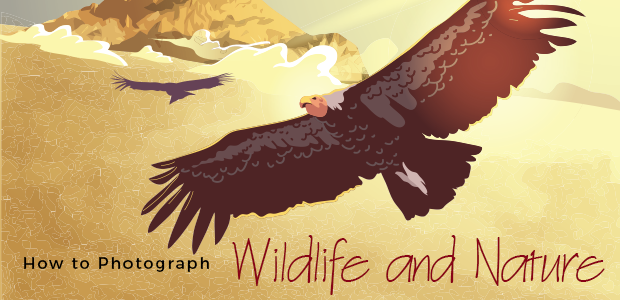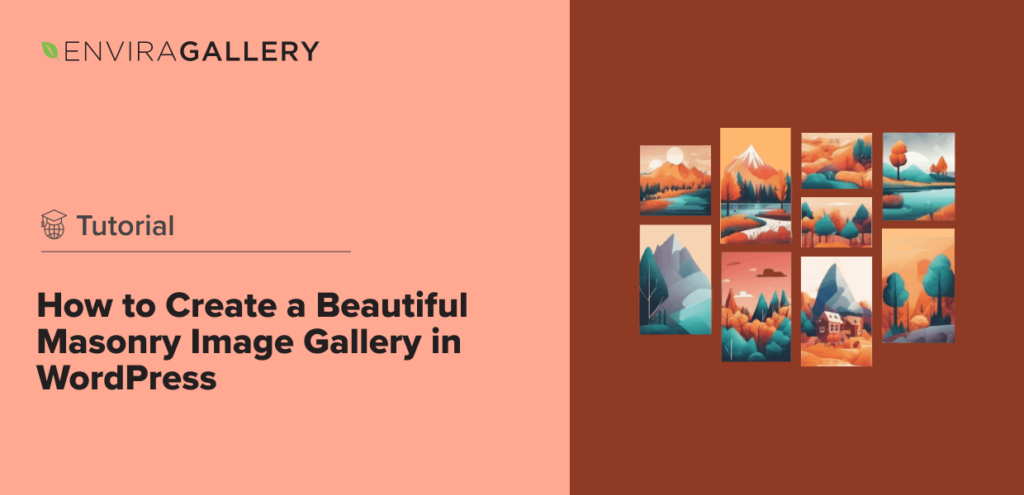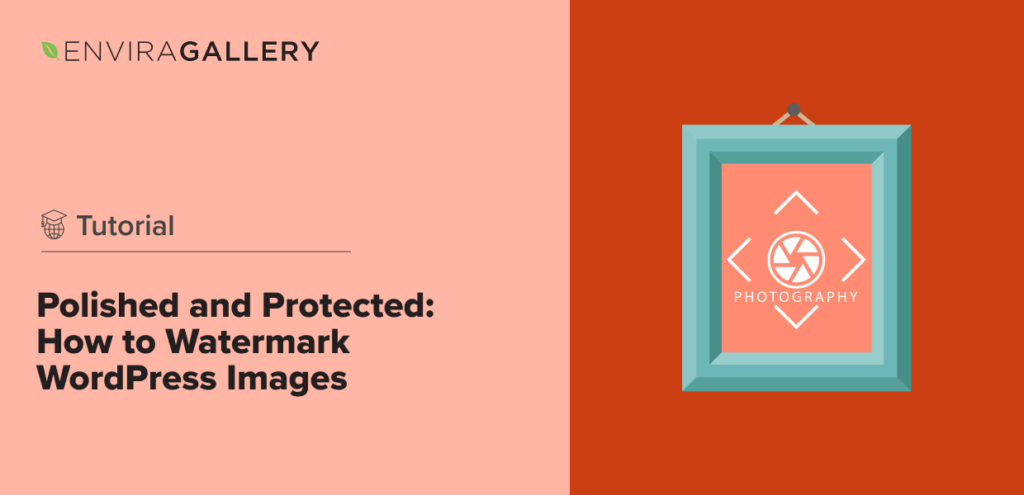For many, there is nothing like being able to capture timeless photographs of wild animals. For those of any level of experience, it can be one of the most satisfying things to do. So, how can you photograph wildlife and nature?
Nature lends itself to photographs incredibly well. The terrain and wildlife that inhabits it are both tremendous subjects. But what can you do to best photograph them?
When journeying into the great outdoors, you might want to capture all sorts of things. How can you go from taking photos of that squirrel on a massive trunk to the landscape of the forest? What can you do to make documenting your trips into nature easy?
These questions and more will be answered in this guide to understanding nature and wildlife photography. We’ll discuss all of the following:
- Challenges of photographing nature and wildlife
- How to photograph nature and wildlife
- Equipment needed to photograph nature and wildlife
Let’s dive into the topic of photographing the natural world.
Challenges of Photographing Nature and Wildlife
What should you expect when photographing nature and wildlife? What are some common challenges of photographing nature and wildlife? How should one prepare for photographing these subjects?
These questions are all fundamental to understanding the basics of nature and wildlife photography. When shooting, immersed by nature, how can you best use your somewhat limited time to get the best images? There are many things that you should be paying attention to in this area.
Photographers for National Geographic had to start somewhere!
First, think of what you want to get out of a trip. Flora and fauna are vastly different subjects, despite occupying the same areas. Know what animals you want to photograph, as well as what scenes.
Keeping notes on this will allow you to have a goal. Setting goals for yourself is the only way to achieve them.
How long are you going to be on location? Some photographs are only possible at certain times. Some images look a lot better in some weather conditions over others.
Knowing the amount of time you have, what conditions to expect, and how quickly these can change is important. It is called the golden hour for a reason. Know when you need to focus on landscapes, and when you can focus on the wildlife.
What to Expect When Photographing Nature and Wildlife
The primary thing to expect is that everything can’t go perfectly every time. There are going to be days when the forecast is exceptional for your work — but the animals just aren’t present. There are going to be times that you wait for hours, only to have weather ruin your twilight landscape.
Knowing what you can do to salvage these situations comes with practice and patience. You might have to wrap a day up without an image you like. That’s the reality for every photographer at some point, or several, in their career.
It is ok to fail. While pretty cliche, this saying stands true here. You won’t always be able to control or even compensate for external circumstances.
Certainly, if you cannot deal with this reality, other genres of photography might be more well-suited for you. Wildlife and street photography are both genres where, unless you stage something, there is always a chance that you’ll find nothing exceptional worth photographing.
Another thing to expect is physical exertion. Some landscapes and animals are accessible from your car. Others require extensive hikes while carrying your heavy equipment.
The best way to know what to expect from a location is to do some research. If you plan on shooting at national parks, call ahead and find out what their trails and driving roads are like. Look at what other photographers have captured there, and reach out to see how they did it.
Common Challenges of Photographing Nature and Wildlife
When photographing both nature and wildlife, several challenges will arise. First, the gear for the two topics is vastly different. Both cameras and lenses for the two genres are typically different, so you need to outfit your kit to deal with both.
Take advantage of camera bodies that can do both types of photography, or use multiple bodies. See how much you can fit in your kit comfortably, and test what the minimum amount of gear you’ll need is. You will have a much better time in the field with what you need rather than with everything you own.
Similarly, know what settings are important for the different photographs you’d like to capture. You might need a heavy, low aperture lens with a long focal length for fast shutter speeds when shooting wildlife. You don’t need the same shutter speeds for nature, so prioritize lighter sharper glass over super fast lenses.
Knowing when you need a fast shutter speed, wide aperture, and ISO performance is a must. A long exposure of a landscape will want low grain, long shutter speeds, and a larger depth of field. On the other hand, to capture an animal you will want a super fast shutter speed and a lower aperture to let in light.
Certainly, knowing your camera settings as well as possible will help you get images without needing to fiddle with gear. In a fast paced setting, this means you will get more usable shots.
The challenge of nature photography is balancing your lens and composing. For this, you will probably need a tripod. Investing in lighter sturdier carbon fiber tripods might make your job easier and less tiresome.
Selling your photos is a challenge on its own. Read through this guide to see what you can do to best sell your nature and wildlife photographs.
A challenge of wildlife photography is capturing motion. This tutorial can get you started, but we’re going to cover the wildlife specifics here.
How Should You Prepare for Photographing Nature and Wildlife?
Pack light, especially on your first trips. Learn your limits both physically and in terms of comfort. This will also help you differentiate which gear you are bringing because you need it, and which gear you are bringing because you have it.
Things like teleconverters and lens filters are light and can assist in making your gear work better for you. Tripods and monopods add substantial weight but might be necessary. Make the distinctions between what gear is worth it for you to carry.
Do research and practice. Practice for longer more intensive trips by heading to local places and practicing what you might need to do in the field. A wild animal is much more timid than one in an urban environment, so learn your ranges and how they differ in different areas.
When doing research, make sure that you search for as specific a location as possible. If you are going to a popular area, there are likely hundreds of documents available. These can help you with the areas to shoot in, the laws of the area, and what seasons or times of day are best.
If you are planning to spend several days or even weeks in the field, make sure that you are well prepared. This matters less for day or several-hour long trips, but even then, you want to know what you might encounter and how you can make yourself more comfortable.
Lastly, make sure that you are prepared for weather. Water and dust sealed cameras, gasket protected lenses, and insulated bags help. Additionally, make sure that your clothing makes it easy to move around and will keep you adequately warm.
How to Photograph Wildlife and Nature
As alluded to previously, wildlife and nature photography are two different genres that often share the same space. Since the two are different, we’ll go over some foundational approaches to both.
Then, we will look at building a kit from the ground up for both applications. If you find yourself photographing natural landscapes or wildlife, pick up a lens to try the other. Who knows, you might even change your preference!
What Are the Most Important Elements to Photographing Nature?
One of the biggest elements to photographing nature is how you choose to represent it. Are you going to represent an ‘honest’ version of what you saw when you took the photograph? Or are you going to be more creative and alter it to impart an emotion or a motif?
Practice both methods, and see what sticks. Find a particular style and then develop it throughout your work. Developing your own style takes time, but it will ultimately make you stand out from your peers and likely sell a few more photos!
Also find yourself in your workflow. Do you prefer to take your time with composition, set up a tripod and a Neutral Density (ND) filter, and take a long exposure? Or do you prefer to photograph handheld, freezing the motion of the world around you?
These questions can lead you to different places in your photographs. You might fall in love with a specific area of nature photography, be it still scenes, plants or vast landscapes. When you figure out what you are trying to capture, you can refine it to perfection.
Additionally, discover which part of nature you really enjoy photographing. It might be documenting plants and biodiverse locations, or it might be what is prettiest. Either way, the passion you have for shooting those favorite things will undoubtedly show through in your pictures.
Finally, you must learn your settings. What shutter speed is best? At what aperture does your lens make the sharpest photo with the best image quality?
What Should You Consider When Photographing Wildlife
First and foremost, consider the safety of both you and the animal. Most birds aren’t going to hurt you, but you shouldn’t walk up to a wolf or a fox. Consider the worst case scenario and how you can prevent it best.
Now, you need to consider technical parts of your photos. How are you framing the animal and what composition are you looking for? How does the light hit the animal, and where is the animal located?
What aperture are you using? Are you trying to separate your subject from the world around them, or are you trying to capture more than just the animal? In some instances, like birds flying overhead, this choice is often decided for you.
The other thing to consider is the noise in your image. If you can’t shoot at base ISO, think of how that might impact the photograph. Test your camera to see what the maximum acceptable ISO is for you. Be careful not to rely on others’ opinions, as ISO is quite subjective and different for different lenses.
Lastly, consider how honest your image is. If you are at a zoo, or even a fenced preserve, you might frame your image to showcase it as if it is in the wild. This raises moral questions about your photography.
The best way to combat this is transparency. Rather than compose differently for the scenario, show your audience how and where the images were taken. Don’t be afraid of being honest, because your career will be much more damaged by lying or hiding the truth.
How to Photograph a Moving Subject in Wildlife
Animals move much faster than humans. The average leopard is faster than Usain Bolt. How can you freeze the motion of a sprinting animal?
Photos of animals running can be simply astounding. Capturing these images is deceptively difficult because of the speed of animals. Some birds require shutter speeds above 1/4000th of a second just to stop motion blur in their wings.
The first problem is focus. How can you autofocus on such a fast subject?
First, set your autofocus point on the animal. Make sure to use a tracking or lock on focus mode if you have those capabilities.
You need to keep the animal sharp and in focus in your photos. To accomplish this:
- Keep the animal on your focus point.
- Shoot at a very high shutter speed
Keeping your focus point on your subject and panning at the same speed that the animal is moving allows you to create a unique image effect. Instead of capturing motion blur from the animal, your camera blurs the background as it moves around the focal point.
This means that you can get motion blur in the background to add to the feeling of speed of the animal.
A high shutter speed will freeze the action completely. The higher the better for stop-frame images, but higher shutter speeds allow less light into your camera sensor. This means you will need to find a balance between the three areas of the exposure triangle.
Using these two techniques together, you can get sharp images of fast paced wild animals.
Equipment Needed for Wildlife and Nature Photography
A professional nature and wildlife photographer’s kit has a lot in it, and it certainly isn’t cheap. But, never fear. You can do a lot to offset both the size and weight of your gear.
What Gear Do Wildlife and Nature Photographers Typically Use?
There is a lot of gear wildlife and nature photographers tend to use. This list generally covers it:
- Digital camera bodies
- Several lenses
- Monopods and/or tripods
- Teleconverters
- Lens filters
- Multiple SD cards
- Additional batteries
- Lightweight and waterproof ways to carry all this!
We’ll mainly focus on the best camera bodies for a hybrid wildlife and nature photographer in this article. Outside of camera bodies and lenses, the rest of the gear on this list can be built into your kit over time.
One great camera to get would be a high megapixel camera. These are some of the key features you should look for:
- Autofocus systems
- Frames per second in continuous autofocus
- Lens selection
- Camera Buffer
A high megapixel amount that does average or better in these areas is perfect. What a larger megapixel amount lets you do is get huge landscapes sharp, but also lets you crop in on wildlife. This is often necessary, no matter the size of your camera’s sensor.
Lenses for Wildlife Photography
This extensive guide will cover most of what you need to know about wildlife photography lenses.
Briefly, you will need long lenses that let in a lot of light. This means expensive, heavy, fast, and sharp glass. Some alternatives include slower zoom lenses that might also allow you to shoot telephoto landscapes.
Lenses for Landscape Photography
Just like above, this guide will be able to inform you on what lenses you might want to buy.
Once again, briefly, you will want some wide angle lenses that are incredibly sharp. If you plan on shooting landscapes that include fast moving animals, you will want something with a large aperture if you are looking to composite images or focus stack.
I would also highly suggest one zoom lens over several prime lenses because a zoom lens will save you a lot of weight and space. You might just need two zoom lenses to cover your entire focal range for landscapes, but that’s still better than five or six primes.
One wide angle, one telephoto, a teleconverter and a camera, and you have a super versatile kit. With this basic lightweight kit you will be able to go out and photograph landscapes and wildlife.
I hope this guide taught you what you wanted to know about wildlife and nature photography. Follow us on Facebook and Twitter for more photography and photo editing content, or sign up for our email list!















